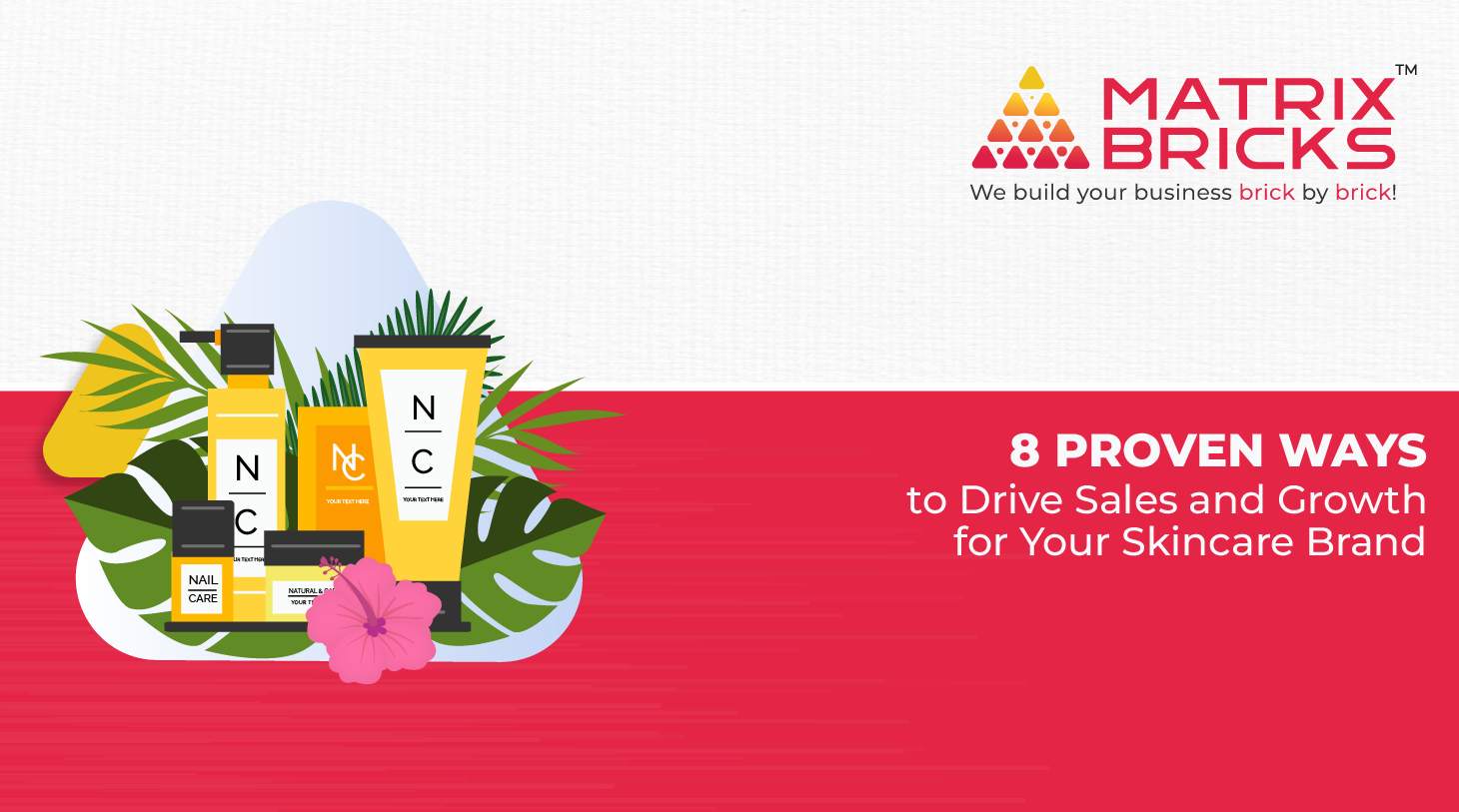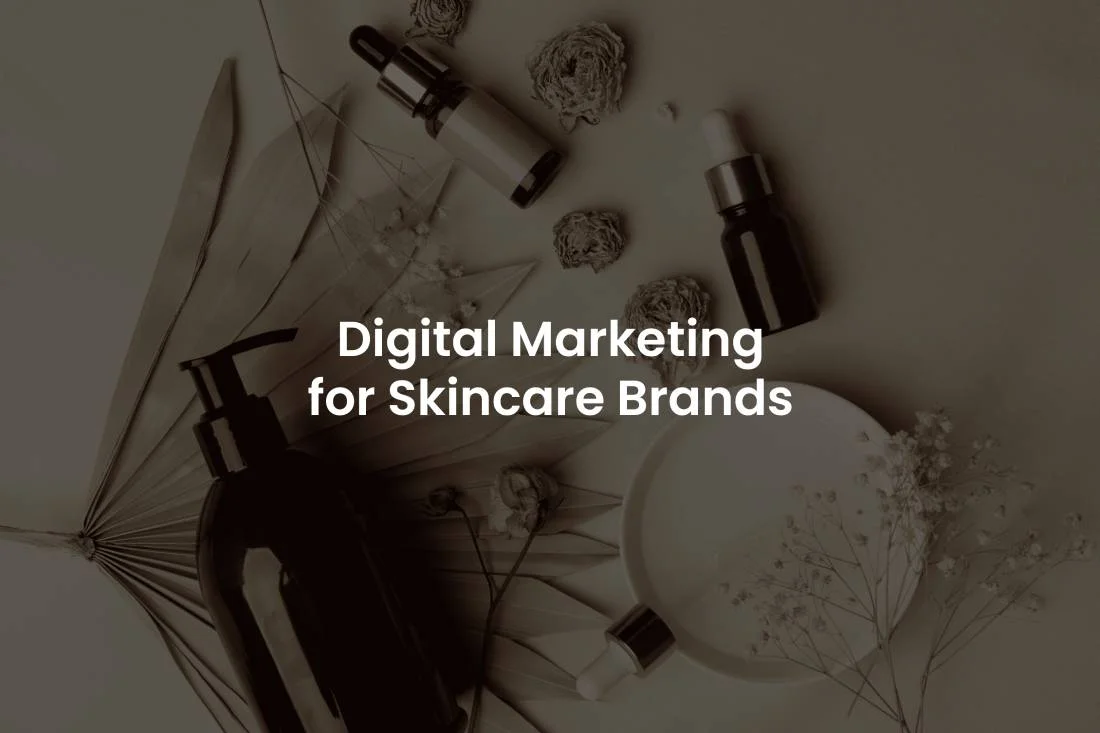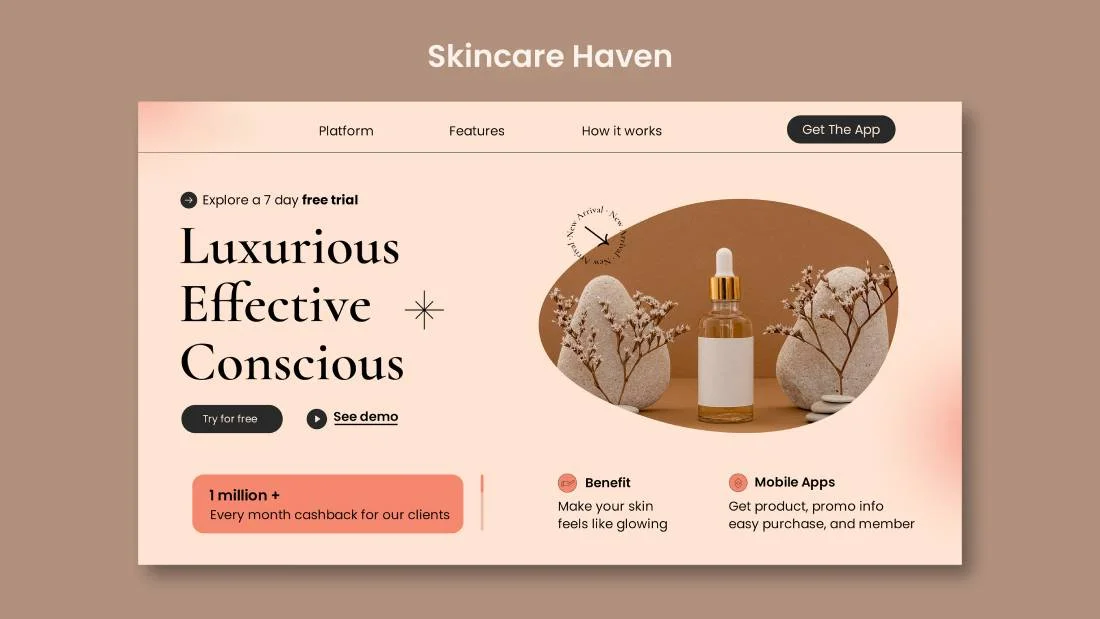
Skincare isn’t just about lotions and potions anymore—it’s a full-blown lifestyle. From chasing that “glass skin” glow to experimenting with jelly cleansers and snail mucin serums, skincare enthusiasts are always on the hunt for the next big thing. But how do you, as a skincare brand, stay ahead in this fast-moving, trend-driven industry?
The answer is simple: A powerful skincare digital marketing strategy that connects your products with the right audience in a way that feels authentic, fresh, and exciting.
Let’s break it all down so you can create a marketing blueprint that drives growth, boosts sales, and makes your brand the one everyone’s raving about online.

Why Digital Marketing is Non-Negotiable for Skincare Brands
Here’s the reality: skincare trends are born and spread online. Remember when “slugging” took over social media? Or how snail mucin went from being “ew” to “wow” after countless rave reviews on social media? That’s the power of digital platforms.
For skincare brands, digital marketing is the bridge between you and millions of potential customers searching for their next holy grail product. Why?
- Trends Move Fast: Digital platforms let you capitalize on what’s hot—whether it’s jelly cleansers or niacinamide serums.
- Consumers are Educated: Your audience is Googling ingredient benefits, reading reviews, and watching tutorials. They want brands they can trust.
- Social media is Key: Skincare enthusiasts love sharing their routines, before-and-after results, and favorite finds.
Let’s be real—if you’re not online, you’re invisible. But don’t worry, we’ve got you covered.
Let’s dive into creating a blueprint that turns clicks into loyal customers.
Step 1: Tap Into Trending Skincare Stories
What’s the buzz in skincare right now? Trends like “glass skin” (think poreless, luminous perfection) or products featuring snail mucin (yes, the slimy stuff) are dominating conversations. Your marketing strategy should lean into these trends.Here’s How to Do It:
- Create content explaining how your products align with popular trends. For example, does your serum help achieve the coveted glass skin? Say it loud and proud.
- Use trending hashtags like #SkinGoals or #JellyCleanser to join the conversation.
- Post educational content, such as the benefits of using snail mucin or why jelly cleansers are a game-changer for sensitive skin.
Pro Tip: Don’t fake it. If a trend doesn’t fit your brand, skip it. The genuine approach always stands tall over time.
Step 2: Make Your Website a Skincare Haven
Imagine your website as the online equivalent of walking into a luxurious skincare store. Does it feel clean, inviting, and informative? If not, consider this the perfect moment for a makeover.
Must-Haves for Skincare Websites:
- Ingredient Breakdown: Have a dedicated section that explains ingredients like hyaluronic acid, niacinamide, or snail mucin.
- Skin Type Finder: Add a quiz that helps customers find products tailored to their unique skin concerns.
- Interactive Features: Offer “how-to” videos or virtual try-on tools to keep visitors engaged.
- Social Proof: Display real customer reviews and glowing before-and-after photos.
- Interactive Idea: Create a section called “Trending Now” that highlights products inspired by the latest skincare obsessions.

Step 3: Use SEO to Own Search Results
When people search for “best cleansers” or “products for oily skin,” does your brand show up? If not, you’re leaving money on the table. Search Engine Optimization (SEO) helps you rank higher on Google, so your brand is visible when it matters most.
How to Nail SEO:
- Sprinkle keywords naturally throughout your site.
- Write blog posts on trending topics like “5 Benefits of Snail Mucin for Hydrated Skin” or “How to Build a Glass Skin Routine.”
- Optimize product pages with detailed descriptions, high-quality images, and FAQs.
Step 4: Let Social Media Do the Talking
Social media isn’t just for selfies—it’s where skincare addicts discover, discuss, and fall in love with products. Platforms like Instagram and TikTok are goldmines for brands that know how to leverage them.
How to Master Skincare Social Media Marketing:
- Post video tutorials: Show your products in action, whether it’s a double-cleanse routine or a dewy makeup look.
- Jump on trends: Create reels or TikToks featuring viral techniques like slugging or skin cycling.
- Host polls and Q&A sessions: Ask your followers what their biggest skincare struggles are, then recommend solutions.
- Interactive Challenge: Post a “What’s in Your Skincare Routine?” poll and get your followers to post their must-have skincare items. Brownie points if they tag your brand!
Step 5: Ride the Paid Ads Wave
Sometimes, organic reach isn’t enough. Paid ads are a vital part of digital marketing for skincare brands, ensuring your products get noticed by the right audience.
Types of Ads to Consider:
- Google Search Ads: Capture customers searching for “hydrating serums” or “anti-aging creams.”
- Social Media Ads: Run Instagram Story ads showcasing customer transformations or new product launches.
- Video Ads: Create engaging content explaining reasons why skincare is non-negotiable.
Pro Tip: Use targeting features to show your ads to people based on their age, location, or skin concerns.
Step 6: Email Marketing with a Personal Touch
Email isn’t dead—it’s just underrated. Done right, it can be one of your most powerful tools for engagement and retention.
Ideas for Engaging Emails:
- Seasonal skincare tips: “Winter Skincare 101—How to Prevent Dryness and Stay Glowy.”
- Exclusive offers: “Snail Mucin Serum is Back—Grab 10% Off Today Only!”
- Personalized recommendations: Suggest products based on past purchases or quiz results.
- Interactive Idea: Include a short quiz in your email, like “What’s Your Skin Personality?” with tailored product suggestions.
Step 7: Create Content That Educates and Inspires
In a world full of options, customers gravitate toward brands that teach them something new. Content marketing is your chance to position yourself as a skincare expert while promoting your products.
Content Ideas to Try:
- Tutorials: “The Secret to Hydrated Skin: How to Use Jelly Cleansers Effectively”
- Explainers: “What Exactly is Snail Mucin, and Why Does Your Skin Love It?”
- Myth-Busting: “Does Oily Skin Really Need Moisturizer? (Spoiler: Yes!)”
- Engage Your Audience: End each blog or video with a question, like “What’s your favorite skincare trend right now?” Encourage comments and shares.
Step 8: Keep an Eye on the Numbers
The beauty of digital marketing is that you can measure everything. Use analytics tools to track what’s working and tweak what isn’t.
Key Metrics to Monitor:
- Website traffic: How many visitors are browsing your site?
- Social media engagement: Are people reacting, engaging, and spreading the word about your content?
- Conversion rates: How many people are buying after clicking on an ad?
Stay Real, Stay Relevant
Skincare is personal. Customers want to trust the brands they use on their skin, and a great skincare digital marketing strategy can help build that trust. By staying on top of trends, creating authentic content, and engaging with your audience, you can turn your brand into a household name.
So, what’s the next step for your skincare brand? Will you post your first TikTok, create a buzzworthy email campaign, or optimize your website for search engines? Whatever it is, remember that Marketing isn’t just about selling—it’s about connecting. And your audience is ready to connect with you.
Let’s get glowing! ????





